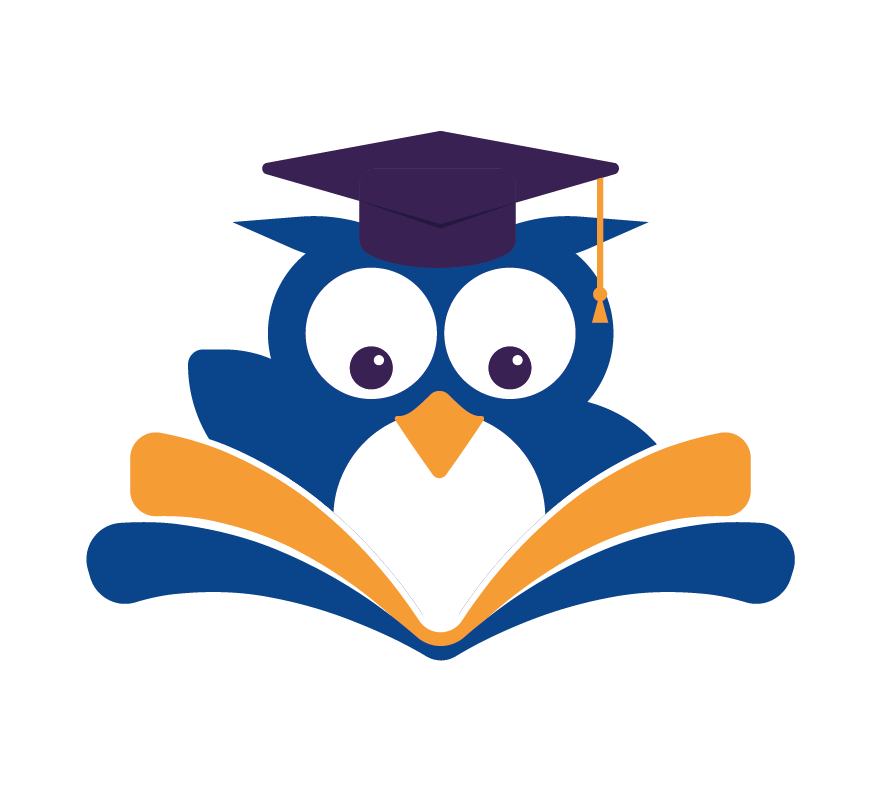We all get stuck in routines. We might eat the same breakfast, go to the same workout spot, or only talk to people who think like us. Our minds need to stay active, just like our bodies, to stay flexible and grow.
Being an open-minded learner means stepping out of your comfort zone. It’s about embracing lifelong learning. It’s about having a curiosity-driven mindset that makes you want to learn new things, ask questions, and try new experiences.
This mindset helps you stay ready for change and reach your full potential. So, how do you become more open and eager to learn? Let’s look at ways to make you more flexible and curious.
Key Takeaways
- Cultivate a curiosity-driven mindset to stay adaptable.
- Break out of your comfort zone to foster lifelong learning.
- Develop a flexible mindset to unlock your full potential.
- Explore new ideas and experiences to stay engaged.
- Become a more motivated learner by embracing new challenges.
The Power of an Open Mind in Learning
Having an open mind is key for learning and growing. When we learn with an open mind, we welcome new ideas and experiences. This makes us more open to different views and knowledge.
What Defines an Open-minded Learner
An open-minded learner is ready to see things from different angles. They are flexible and can adjust to new information easily. This skill is vital in today’s changing world of learning.
Key Characteristics of Mental Flexibility
Mental flexibility is a big part of being open-minded. It means being able to change our thinking and adapt to new things. Some important traits include:
- Being able to adjust to new or tough information
- Being ready to question what we already know
- Being able to think about many viewpoints at once
By working on these skills, learners can become more adaptable. This helps them deal with the challenges of modern learning.
Being intellectually open has many benefits. It improves our critical thinking, creativity, and ability to keep learning. Open-minded learners can:
| Benefit | Description |
|---|---|
| Enhanced Critical Thinking | Open-minded learners can analyze information better. They can evaluate evidence and make strong conclusions. |
| Improved Creativity | Open-minded people think differently. They can come up with new ideas and solve problems in creative ways. |
| Continuous Improvement | An open mind helps us grow. It lets us see challenges as chances to learn and improve. |
By being open-minded in learning, we can reach our full potential. This leads to better success in school and work.
Assess Your Current Mindset
Understanding your mindset is a key step to becoming more self-motivated. It’s about how you view new ideas and experiences. Being open-minded means considering different views and being empathetic, even when we disagree.
Recognizing Signs of a Closed Mindset
A closed mindset shows in many ways. It’s important to spot these signs to change.
Common Thought Patterns to Watch For
- Dismissing new ideas without consideration
- Reacting defensively to opposing viewpoints
- Sticking rigidly to familiar methods or beliefs
Practical Self-Assessment Tools
To check your openness, try mindset questionnaires and reflection exercises. These tools can show where you might be limiting yourself.
Mindset Questionnaires and Reflection Exercises
Do activities that make you think about your thoughts and actions. Ask yourself, “How do I react to new ideas?” or “Do I stick to what I know, or explore new ways?”
Break Down Mental Barriers
To become an open-minded learner, we must first understand our mental barriers. Our minds often respond in predictable ways. These patterns can limit our ability to learn and grow.
Identify Your Cognitive Biases
Cognitive biases are systematic errors in thinking. They affect our decisions and judgments. Knowing these biases is the first step to overcoming them.
Confirmation bias is a common one. It’s when we look for information that confirms our beliefs. This can make us miss out on new ideas.
Common Biases That Limit Learning
- Anchoring bias: We rely too much on the first piece of information when making decisions.
- Availability heuristic: We judge the likelihood of an event based on how easily examples come to mind.
Techniques to Challenge Existing Beliefs
Challenging our beliefs is hard but necessary for growth. One effective method is the “Steel Man” approach. It involves strengthening the opposing argument before responding.
The “Steel Man” Approach
This method means understanding the opposing viewpoint deeply. We present it in a way that our opponent would agree is fair. It’s about being fair and giving the other side a fair hearing.
Perspective-Taking Exercises
Exercises that challenge our perspective are also helpful. This could be role-playing or simply thinking from another viewpoint. By doing this, we become more empathetic and open to new ideas.
Cultivate Intellectual Curiosity
As we aim to grow as lifelong learners, it’s key to have a curious mindset. This means not just looking for new knowledge. It also means thinking in a way that questions and explores our surroundings.
Learn to Ask Better Questions
At the core of curiosity is asking the right questions. It’s about going beyond simple questions. We should aim for deeper inquiries that spark thought and conversation.
The Five Whys Technique
The Five Whys technique is a great way to ask better questions. By asking “why” five times, we uncover the true reason behind something. This helps us understand it better.
Socratic Questioning Methods
Socratic questioning is another powerful tool. It involves asking a series of questions to encourage deep thinking. This method helps us see things more clearly and explore topics in depth.
Develop a Wonder-Driven Approach
Keeping a sense of wonder is vital for staying curious. It’s about being open to new things and seeing the world with awe and curiosity.
Curiosity Journaling Practices
Curiosity journaling is a way to nurture wonder. By writing down our questions, observations, and insights, we can follow our journey of discovery. It helps us reflect on what we’ve learned.
| Technique | Description | Benefit |
|---|---|---|
| Five Whys | Repeatedly asking “why” to drill down to the root of a problem | Deeper understanding of subject matter |
| Socratic Questioning | Asking questions to encourage critical thinking | Clarifies understanding, exposes assumptions |
| Curiosity Journaling | Recording questions, observations, and insights | Tracks learning, fosters reflection |

Becoming an Open-minded Learner Through Daily Practices
Becoming open-minded is a journey that needs daily effort. To grow an adaptable mindset, add certain habits to your day. This will help you welcome new ideas and grow in both life and work.
Implement Morning Mindset Routines
Starting your day right can help keep you open-minded. Two good practices are:
Meditation for Mental Flexibility
Adding meditation to your morning can make your mind more flexible. It helps you solve problems better and lowers stress.
Daily Learning Commitments
Learning something new every day is key. It could be reading, listening to a podcast, or watching a video.
Integrate Curiosity into Everyday Life
Curiosity drives an open-minded learner. By being curious every day, you’ll understand the world better.
Conversation Techniques for Deeper Understanding
Having deep conversations broadens your views. Active listening and asking questions help you see things from others’ angles.
Digital Tools for Expanding Perspectives
Today, many digital tools can expand your knowledge. Online courses, apps, and podcasts offer lots of information.
By making these habits part of your day, you’ll become more open-minded. You’ll have an adaptable mindset and a drive for continuous improvement.
Embrace Diverse Perspectives
It’s key to embrace diverse perspectives to become an open-minded learner. Being open-minded means you’re ready to explore new ideas without dismissing them. It’s about carefully examining new views before accepting them.
Actively Seek Out Opposing Viewpoints
To widen your view, seek out opposing viewpoints. This means:
- Engaging with people from different backgrounds and industries
- Reading literature and articles that challenge your current beliefs
- Participating in debates and discussions that expose you to different perspectives
Creating a Balanced Information Diet
Having a balanced information diet is vital for an open mind. This involves getting information from various sources, such as:
| Source | Description |
|---|---|
| Mainstream Media | Provides a general overview of current events |
| Niche Blogs | Offers in-depth analysis on specific topics |
| Academic Journals | Publishes research findings on various subjects |
Learn from Different Cultural Approaches
Learning from different cultural approaches boosts your open-mindedness. This includes:
- Studying cultural practices and traditions
- Understanding the historical context of different cultures
- Engaging with people from diverse cultural backgrounds
Cross-Cultural Learning Strategies
Effective cross-cultural learning strategies involve being open to new experiences. For example, you can:
- Participate in cultural exchange programs
- Travel to experience different cultures firsthand
- Learn a new language to broaden your cultural understanding
Finding Value in Unfamiliar Thinking Styles
Finding value in unfamiliar thinking styles requires an open and curious mindset. You can do this by:
- Being patient and willing to listen to others
- Asking questions to clarify your understanding
- Reflecting on your own biases and assumptions

Develop a Growth Mindset for Continuous Improvement
To become a self-motivated learner, adopting a growth mindset is key. Carol Dweck says a growth mindset believes you can grow your abilities with hard work. This mindset is vital for continuous improvement and reaching your full potential.
Fixed vs. Growth Mindset in Practice
It’s important to know the difference between fixed and growth mindsets. A fixed mindset thinks your abilities are set, while a growth mindset sees them as something you can develop. Here are the main differences:
- A fixed mindset avoids challenges, while a growth mindset welcomes them.
- A fixed mindset sees effort as pointless, but a growth mindset sees it as a way to master something.
- A fixed mindset ignores feedback, but a growth mindset learns from it.
Reframing Challenges as Opportunities
To use a growth mindset, see challenges as chances to grow. When faced with a tough task, ask yourself: “What can I learn from this?” or “How can this challenge help me get better?”
Transform Failures into Learning Opportunities
Failures are a normal part of learning. Instead of getting discouraged, use them as chances to grow. Think about what went wrong and how you can do better next time.
The After-Action Review Process
An after-action review is a great way to learn from failures. It involves:
- Looking at what was planned versus what happened.
- Finding out what worked and what didn’t.
- Deciding what you would do differently next time.
Building Resilience Through Reflection
Reflection is crucial for building resilience. By thinking about your experiences, you can find areas to improve and strategies for future challenges. Make reflection a regular part of your routine to grow your mindset.
Build a Knowledge-Seeking Habit System
To grow a culture of curiosity, we must build a strong habit system. We need to create good learning routines and use the right tools for learning on our own.
Create Effective Learning Routines
Having a regular routine is crucial for making learning a habit. Plan your day, week, or month to set aside time for learning.
Time-Blocking for Exploration
Time-blocking is a great way to schedule learning. Pick specific times, like during your commute or before bed. This helps you stay focused and avoid putting off learning.
Progressive Learning Schedules
Start with simple learning sessions and gradually make them more challenging. This keeps learning exciting and keeps you engaged.
Leverage Tools for Self-Motivated Learning
Today, many tools and resources help with self-motivated learning. You can find educational apps, online courses, podcasts, and forums.
Digital Resources for Continuous Learning
Online courses, e-books, and podcasts offer a lot of information. They let you learn at your own pace and whenever you want.
Community-Based Learning Approaches
Learning with others can be very motivating. Join online forums, social media groups, or local meetups. Talking with others who are also learning can make it more fun.
| Learning Method | Description | Benefits |
|---|---|---|
| Time-Blocking | Dedicated time slots for learning | Increased productivity, reduced procrastination |
| Progressive Learning | Gradually increasing learning complexity | Enhanced engagement, better retention |
| Digital Resources | Online courses, e-books, podcasts | Flexibility, accessibility, variety |
| Community Learning | Online forums, social media groups, local meetups | Motivation, support, networking opportunities |
Overcome Challenges to Open-Mindedness
Trying to be open-minded can be tough. We often face challenges like too much information and our own mental blocks. These can make it hard to learn new things and accept new ideas.
Deal with Information Overload
In today’s world, we get hit with lots of info from everywhere. It’s hard to know what’s important and what’s not. We need good ways to sort through all this to learn well.
Curation Strategies for Quality Learning
Using tools and apps can help filter out bad info. This lets us focus on the best stuff. For example, apps can help organize our learning materials and keep things from getting mixed up.
| Tool/App | Purpose | Benefit |
|---|---|---|
| Aggregator Apps | Organize learning materials | Reduces information clutter |
| Focus-enhancing Tools | Minimize distractions | Improves concentration |
Navigate Through Mental Resistance
Mental resistance is a big hurdle to being open-minded. It makes us feel stuck or unable to see other views.
Techniques for When You Feel Stuck
When we feel stuck, taking a break can help. Sometimes, just changing where we are or taking a short pause can get us moving again.
Overcoming Confirmation Bias
Knowing about confirmation bias is key to beating it. By looking for different views and questioning our own, we can grow more open-minded.
By using these tips, we can beat the obstacles to open-mindedness. This lets us keep learning and growing for life.
Measure Your Progress as a Flexible Thinker
It’s key to track your growth as a flexible thinker. This helps keep your curiosity alive. As you learn more, celebrate your wins and note your growth.
Track Mental Flexibility Improvements
Journaling is a great way to see how you’re improving. Writing down your thoughts and experiences helps you understand your growth better.
Journaling Methods for Self-Awareness
There are many ways to use journaling for self-awareness:
- Daily reflection: Write down your thoughts and experiences each day to identify patterns and areas for improvement.
- Weekly review: Summarize your key takeaways and accomplishments each week to track your progress.
- Monthly analysis: Reflect on your overall growth and adjust your strategies as needed.
Celebrate Small Wins in Mindset Development
It’s important to celebrate your small victories. This keeps you motivated and encourages positive habits. Acknowledging your achievements helps you stay curious and keep learning.
Recognition Practices for Sustained Motivation
| Practice | Description | Benefit |
|---|---|---|
| Reward System | Set up a system to reward yourself for achieving milestones. | Boosts motivation and reinforces positive behavior. |
| Progress Tracking | Regularly track your progress and reflect on your growth. | Enhances self-awareness and encourages continued improvement. |
| Sharing Success | Share your achievements with friends or mentors to gain support and encouragement. | Fosters a sense of community and accountability. |
Using these methods helps you measure your growth as a flexible thinker. It keeps your lifelong learning journey exciting and rewarding.
Conclusion: Your Journey to Lifelong Curiosity
Being open-minded is a journey, not a final goal. As you keep moving forward, you’ll see it’s a lifelong adventure. It brings many rewards, like being more adaptable and resilient when faced with challenges.
We’ve looked at ways to grow your curiosity and overcome mental blocks. By using these tips every day, you’ll be ready to handle the world’s changes.
Your journey to lifelong curiosity is ongoing. Keep working towards your goals, and you’ll be surprised at how far you’ll go. Always remember, success comes from staying flexible and curious.

